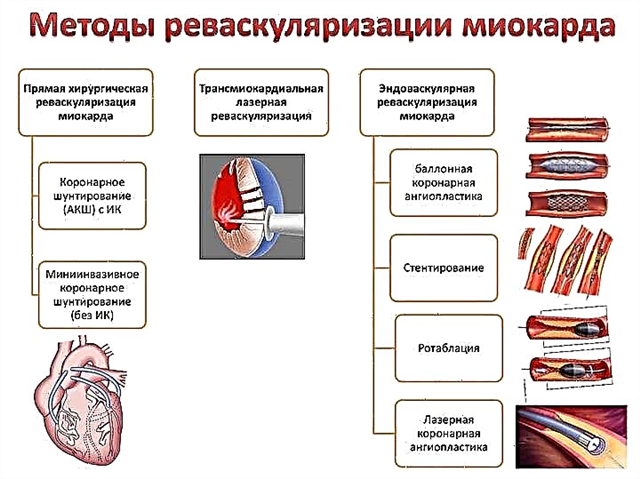Portal hypertension is accompanied by an increase in pressure in the portal vein, which is triggered by poor blood flow. Increase by more than 10-20 mm. the mercury column becomes the reason for its expansion. As a result, the veins cannot withstand such pressure, they rupture with subsequent hemorrhage.
Pathogenesis
Portal hypertension is characterized by dyspepsia, ascites, bleeding in the digestive system, varicose veins of the esophagus, stomach, splenomegaly. The group of symptoms that manifests itself in this case occurs against the background of an increase in hydrostatic pressure and impaired blood flow in the inferior vena cava or hepatic veins. This condition can give serious complications in the presence of diseases in the field of hematology, cardiology, gastroenterology and vascular surgery.
 The mechanism of the syndrome development is due to the increase in hydromechanical resistance. Currently, the pathogenesis of portal hypertension is not well understood. Presumably, its development occurs due to an increase in the corresponding area in the vascular system.
The mechanism of the syndrome development is due to the increase in hydromechanical resistance. Currently, the pathogenesis of portal hypertension is not well understood. Presumably, its development occurs due to an increase in the corresponding area in the vascular system.
Most often, portal intrahepatic hypertension is caused by cirrhosis of the liver.
Along with this, the dissection of the sinusoidal network by connecting partitions is noted, as a result of which a large number of isolated fragments are formed. Thus, the volume of false lobules increases, and the sinusoids are deprived of the mechanisms that regulate blood flow.
Among the reasons for the development of portal hypertension syndrome should be highlighted:
- Increased vascular resistance in the venous walls of the liver and in the portal vein.
- The formation of collaterals on a segment of the systemic outflow of blood and portal blood vessel.
- An increase in the volume of blood flow in the vascular branch of the portal system.
- Violation of blood outflow due to mechanical obstruction.
Pathogenesis in the form of mechanical provoking factors of portal hypertension is represented by the formation of nodes and violation of the architectonics in the liver, swelling of hepatocytes, and increased resistance of portosystemic collaterals.
Symptoms and Signs
The very first manifestations are expressed by dyspeptic symptoms:
- feeling of nausea, vomiting;
- loss of appetite;
- epigastric pain;
- flatulence;
- stool disorders;
- soreness from the right hypochondrium and iliac region;
- feeling of a full stomach.
Often, with portal hypertension, there is weakness in the body, rapid fatigue, a sharp decrease in weight, and even the development of jaundice.
Ascites is also noted, which is characterized by resistance to therapy. In a patient with portal hypertension, the abdomen increases in volume, swelling of the ankles appears, and dilated veins on the surface of the abdominal wall are visible.
Sometimes portal hypertension syndrome, the symptoms of which differ in each person, is accompanied by splenomegaly. The degree of its severity depends on the pressure in the blood supply to the abdominal organs and the nature of the obstruction.
It is worth noting that in this case, after hemorrhages in the digestive system, the size of the spleen decreases, the pressure in the portal circulation system decreases. It is extremely rare that splenomegaly occurs with hypersplenism syndrome. It is characterized by thrombocytopenia, anemia and leukopenia. Their development is associated with the destruction of uniform blood cells in the spleen.
The most dangerous signs of portal hypertension are bleeding in the esophagus, rectum, and stomach.
 They open suddenly and are characterized by abundance. These bleeding can recur from time to time, which is the cause of post-hemorrhagic anemia.
They open suddenly and are characterized by abundance. These bleeding can recur from time to time, which is the cause of post-hemorrhagic anemia.
If this happens inside the abdominal organs, the person opens up vomiting with blood inclusions. Hemorrhoidal bleeding is manifested by the release of scarlet blood from the anus. A similar phenomenon can be triggered by damage to the spleen, poor blood clotting, increased intra-abdominal pressure.
Causes of pathology
- Damage to the liver by parasites.
- Chronic hepatitis.
- Tumor in the area of the hepatic or bile duct.
- Neoplasms in the liver.
- Autoimmune disease in the form of primary biliary cirrhosis.
- Clamping of the bile ducts during the operation.
- Liver damage on the background of poisoning with poisons (drugs, mushrooms).
- Significant burns.
- Cardiovascular diseases.
- Extensive injuries.
- Cholelithiasis.
- Critical condition due to trauma, sepsis, or disseminated intravascular coagulation.
In addition to these reasons, there are other factors that provoke the appearance of portal hypertension. These include infections, the use of sedatives and tranquilizers, alcohol addiction, excessive eating of animal proteins, and surgical interventions.
The causes of portal hypertension are also represented by thrombosis, congenital arthresia, a surge in pressure in the heart with constrictive pericarditis or restrictive cardiomyopathy.
Diagnostics
It is possible to determine portal hypertension only by studying the patient's clinical picture, having familiarized himself with his anamnesis. Instrumental research plays an important role.
First of all, when examining a patient, the doctor attaches importance to the manifestations of collateral circulation in the form of a mesh of dilated veins on the abdominal wall, hemorrhoids, tortuous vessels near the navel, and an umbilical hernia.
As for laboratory studies, they are represented by the following list:
- general clinical analysis of blood, urine;
- study of biochemical parameters of blood;
- conducting a coagulogram;
- check for hepatitis;
- identification of serum immunoglobulins.
X-ray diagnostics involves portography, splenoportography, cavography and celiacography. The results obtained from these studies allow us to determine the degree of blockage of the portal blood flow, as well as to assess the possibility of laying vascular anastomoses. On the basis of scintigraphy, it is possible to understand the state of the hepatic blood flow.
In order to detect ascites, splenomegaly and hepatomegaly, an ultrasound examination of the abdominal cavity is prescribed. Dopplerometry allows assessing the condition of the hepatic vessels.
 Diagnosis of a patient with suspected portal hypertension is not complete without esophagoscopy, sigmoidoscopy and esophagogastroduodenoscopy. Thus, it is possible to determine the presence of varicose veins from the gastrointestinal tract. Instead of endoscopy, an X-ray of the esophagus and stomach can be performed. If there is a need for morphological results, a liver biopsy is prescribed, as well as diagnostic laparoscopy.
Diagnosis of a patient with suspected portal hypertension is not complete without esophagoscopy, sigmoidoscopy and esophagogastroduodenoscopy. Thus, it is possible to determine the presence of varicose veins from the gastrointestinal tract. Instead of endoscopy, an X-ray of the esophagus and stomach can be performed. If there is a need for morphological results, a liver biopsy is prescribed, as well as diagnostic laparoscopy.
Treatment for adults
The initial stage of the disease can be treated with conservative methods. In this case, the administration of vasoactive drugs is prescribed, the action of which is aimed at reducing the pressure in the portal vein.
The goal of treatment is to reduce pressure in the portal circulation system, normalize hepatic functions, stop bleeding and compensate for blood loss, and restore blood coagulation.
Portal hypertension is treated as follows:
- Application of "Propranolol". Along with this, sclerotherapy or clamping of varicose vessels is performed.
- To stop hemorrhage use "Terlipressin" in a stream.After that, every four hours, 1 mg of the drug is administered for 24 hours. Its effect is longer, in contrast to "Vasopressin".
- Portal hypertension is also treated with Somatostatin, which halves the frequency of recurrent bleeding. However, it should be noted that this drug disrupts the water-salt balance and impairs blood circulation. That is why it must be used with extreme caution in ascites.
- Endoscopic sclerotherapy requires tamponade and the introduction of "Somatostatin". The drug, which has a sclerosing effect, clogs the dilated veins. This procedure is highly effective.
The bleeding that has opened is stopped by installing a special Sengstaken-Blackmore probe. If this measure does not bring the desired result, they resort to hardening of the veins. Such an event is carried out every 2 days, until the bleeding stops completely.
With the low efficiency of conservative techniques, suturing of the altered veins through the mucous membrane becomes inevitable.
Treatment of portal hypertension is carried out with nitrates, adrenergic blockers, inhibitors, glycosaminoglycans. In the absence of results after drug treatment, surgical intervention is required. The essence of the operation consists in laying a portocaval anastomosis on the vessels, which ultimately allows the formation of a roundabout anastomosis between the tributaries of the portal vein. There are several options for surgical treatment that address the following problems:
- Formation of new pathways to ensure the outflow of blood.
- Reduction of the volume of blood entering the portal area.
- Improving the regeneration processes in the liver.
- Drainage of the abdominal cavity to remove ascitic fluid.
- Rupture of the veins connecting the esophagus with the stomach.
Contraindications for the operation include pregnancy, serious diseases of internal organs, old age.
Treatment of children

Portal hypertension in children may not manifest clinically for a long time. The cause of its development in adults is most often liver cirrhosis. Children, on the other hand, suffer from this pathology due to thrombosis or anomalies in the development of the veins of the portal section, which causes a blockage of blood flow.
To reduce pressure in the portal vein and prevent bleeding, non-selective adrenergic blockers are used. Thanks to this, it is still possible to cope with varicose veins.
Recurrent bleeding that does not stop with drug therapy is an indication for intrahepatic bypass surgery. It is also possible that liver transplantation may be required in the treatment of portal hypertension in children.
Modern surgical treatment of a child implies carrying out portosystemic anastomoses, as well as performing surgical procedures aimed at restoring the structure of altered veins. Endoscopic sclerotherapy has proven itself well. To cope with hypersplenism and splenomegaly allows endovascular embolization of the parenchyma.
Anastomoses for portal hypertension
There are 3 groups of anastomosis:
- Formed by the umbilical veins. Their pronounced expansion entails the appearance of a specific pattern on the abdominal wall, which is called the "head of a jellyfish".
- Anastomoses located at the interlacing of the lower, middle and upper rectal veins. Strong expansion of the venous walls can provoke profuse rectal hemorrhage.
- Anastomoses concentrated in the esophagus and cardiac zone of the stomach. If you have varicose veins, there is a risk of bleeding. This is facilitated by walls covered with ulcerative formations, the nature of which is reflux esophagitis.
The prognosis for the diagnosis of portal hypertension depends mainly on the nature and severity of the underlying disease. An unfavorable outcome is most often observed in the presence of an intrahepatic form. Patients usually die from liver failure or severe gastrointestinal hemorrhage. Installation of portocaval anastomoses can prolong the patient's life by 15 years.



